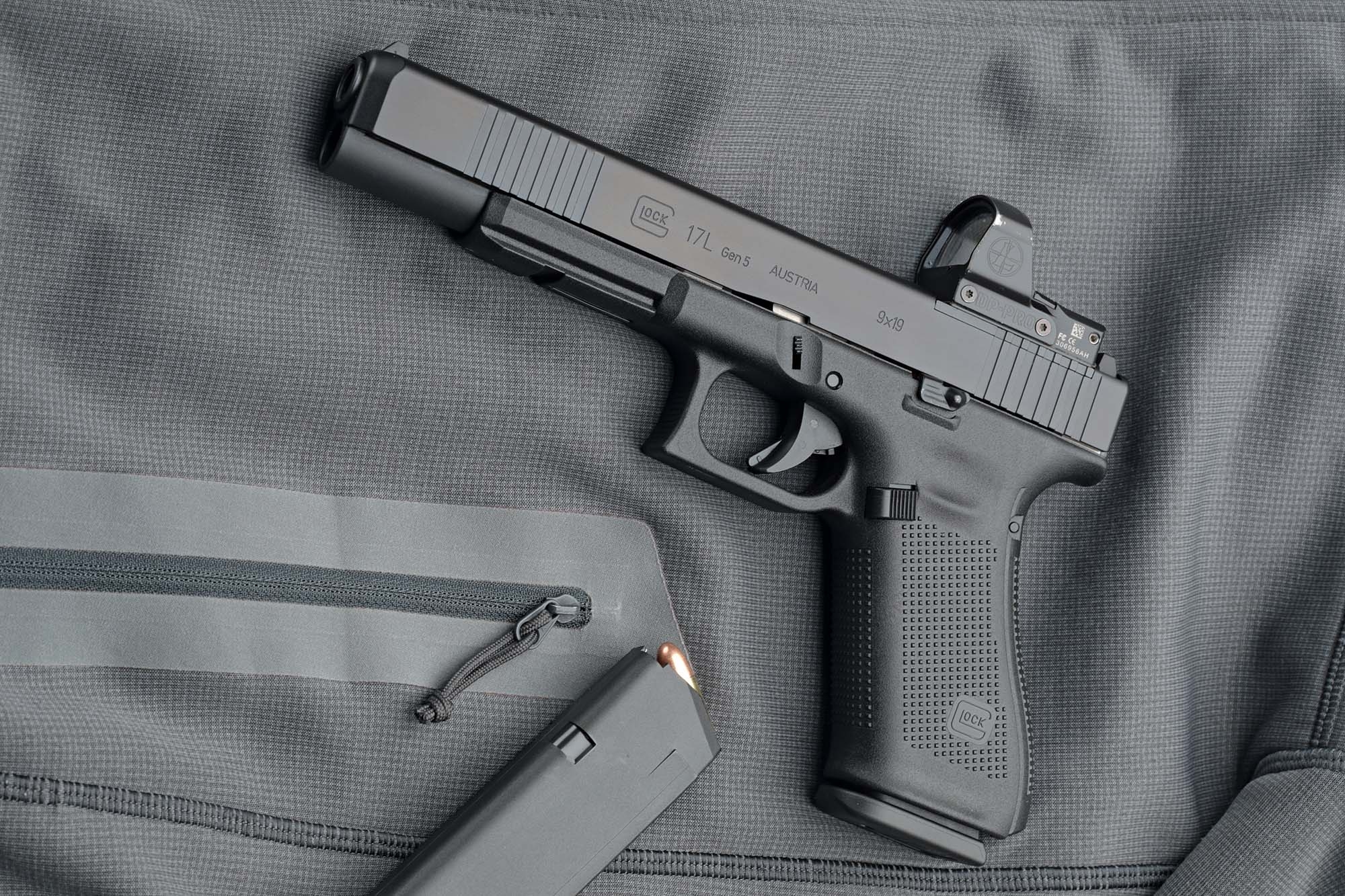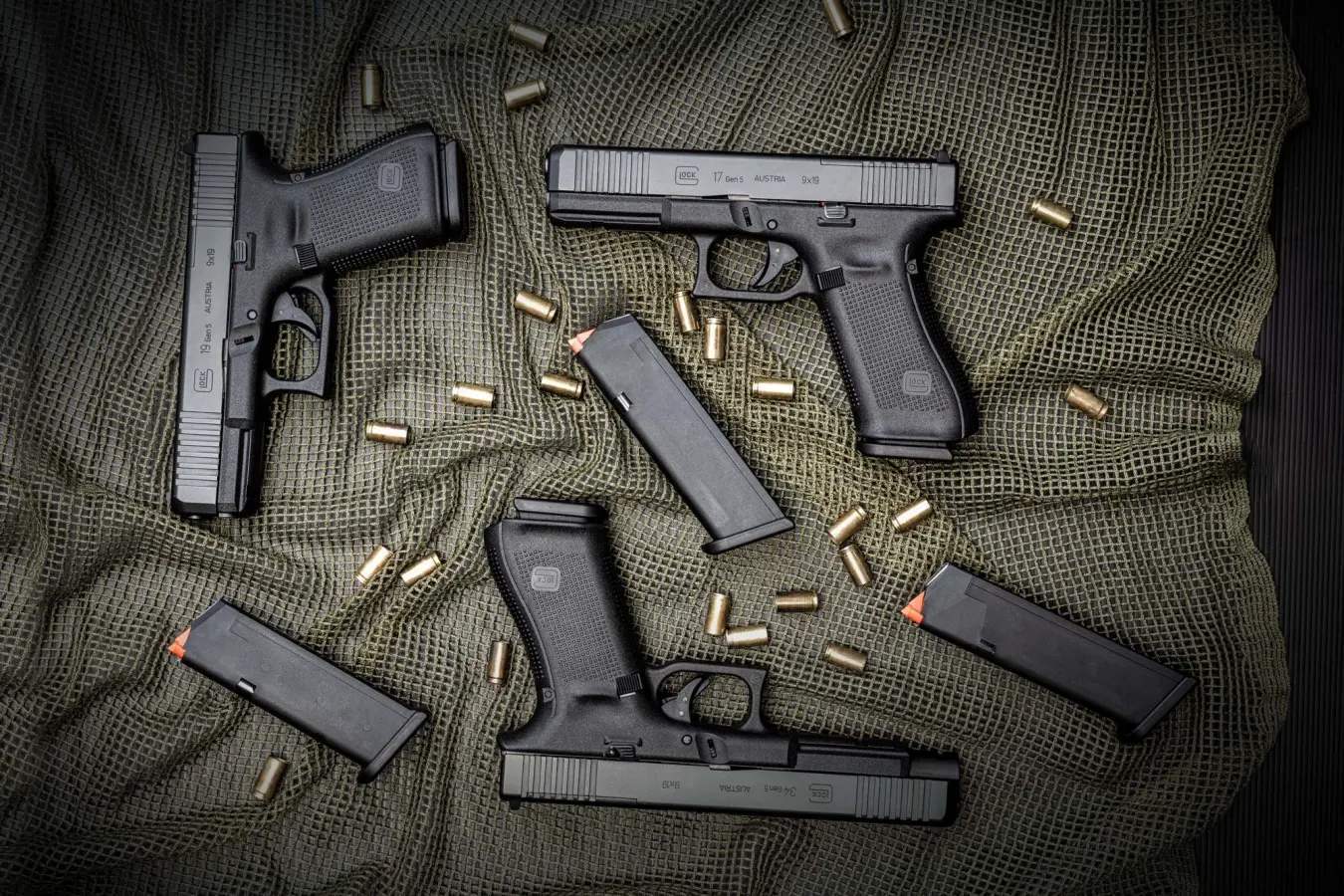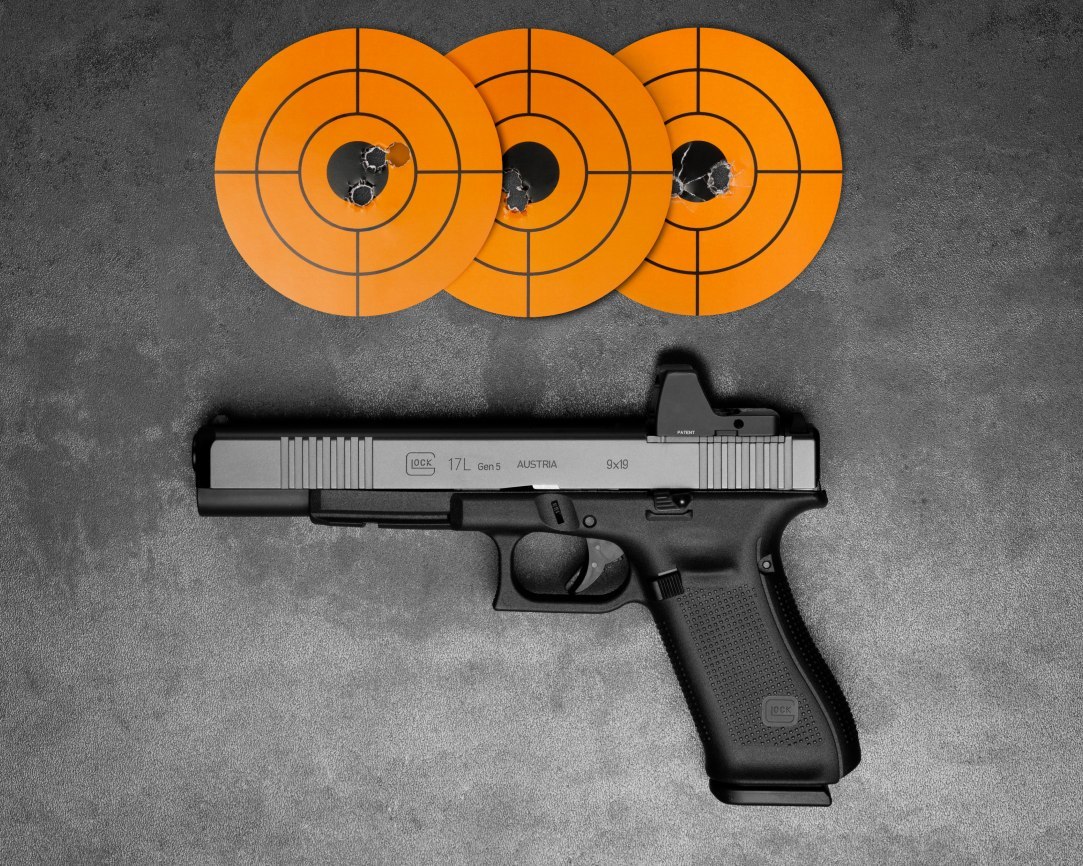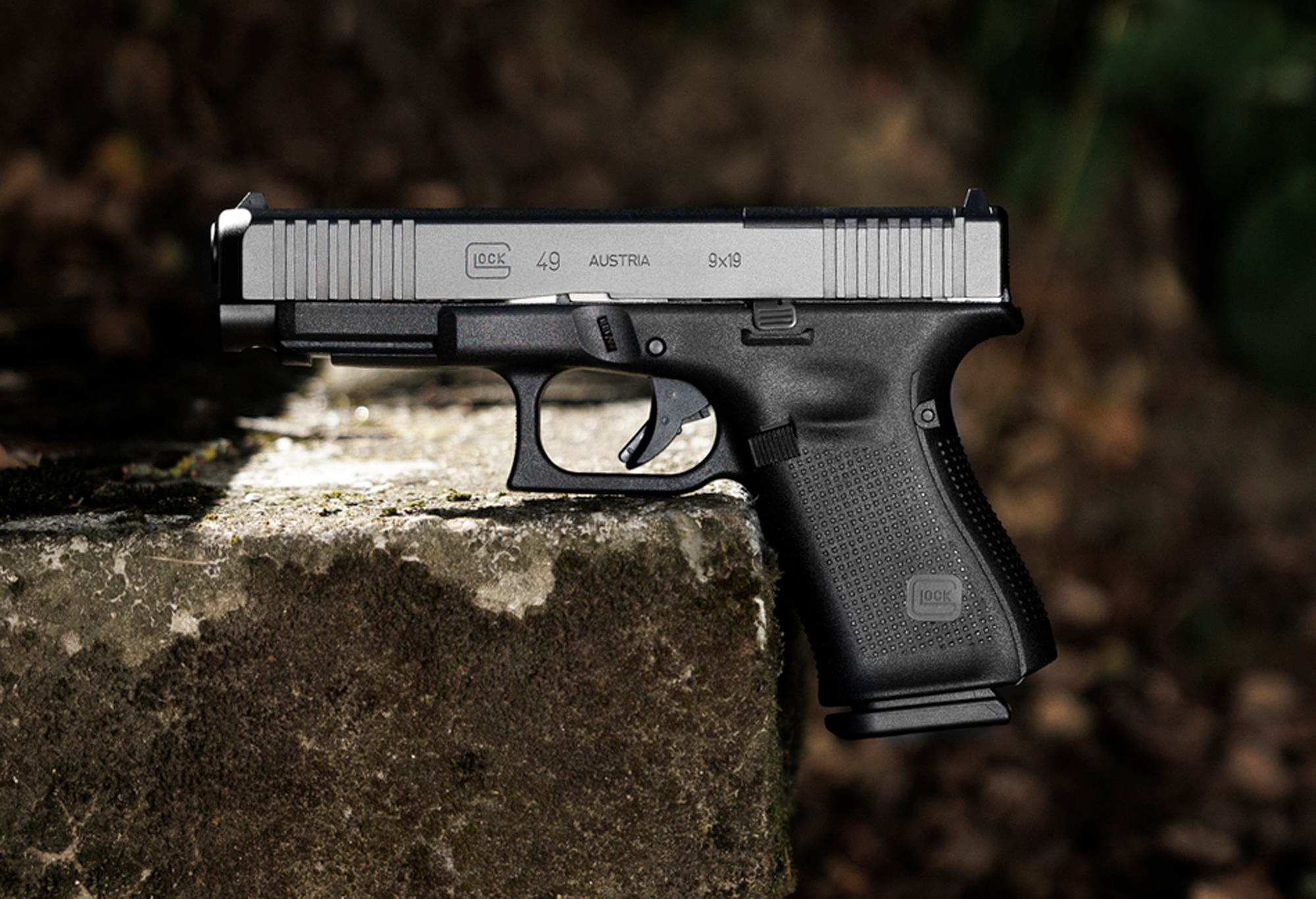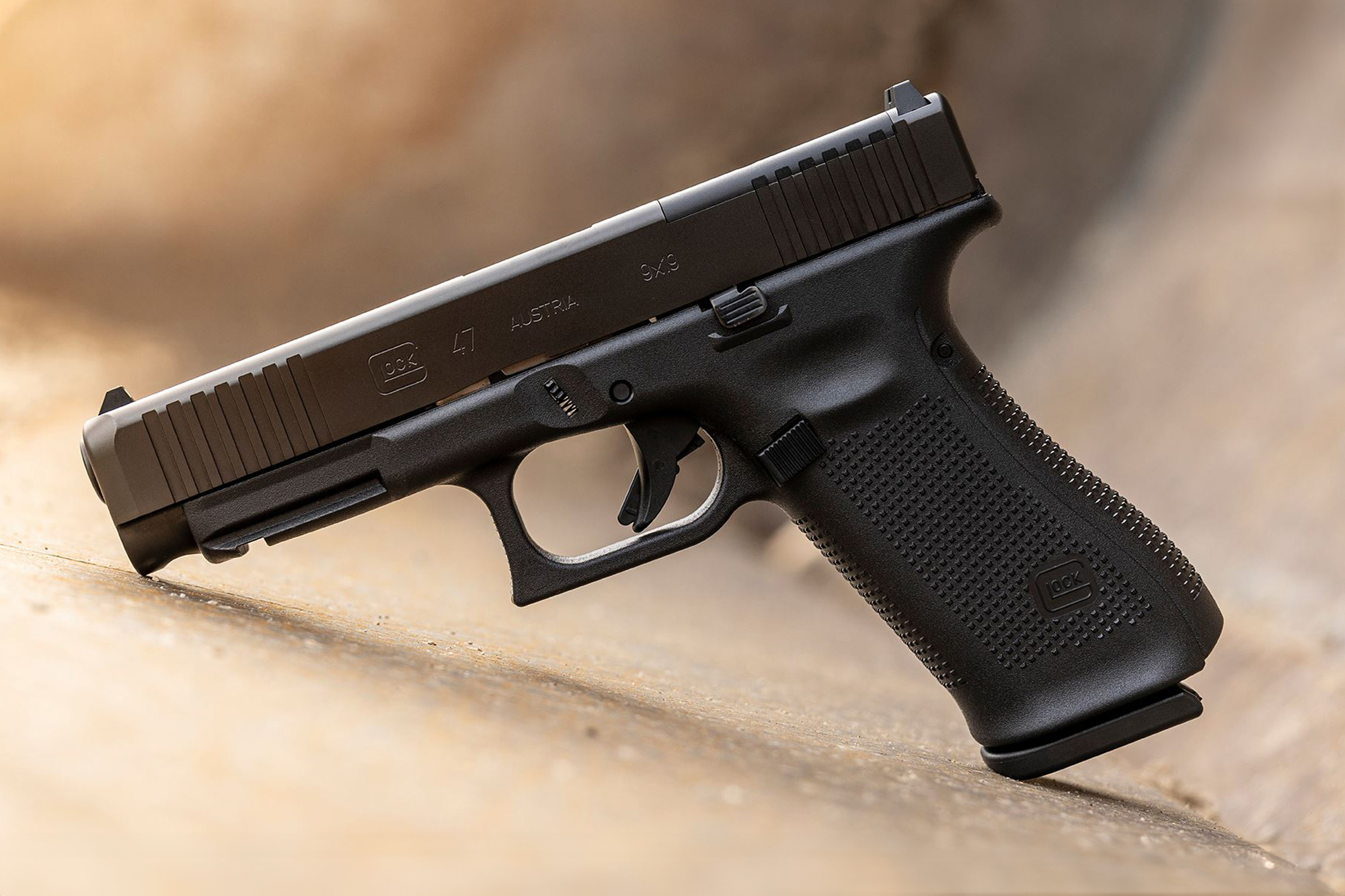The G46 is GLOCK's answer to the technical requirements (TR) of German police forces for service pistols. It certainly comes somewhat late, because most German federal states already procured new generations of service pistols some time ago. Nevertheless, GLOCK was able to score at least a point in the German state of Saxony-Anhalt (see our article). There, about 8,600 G46 pistols will be issued until 2021. The rumour persists that the police TR at that time were intentionally written in such a way so that the internationally highly successful "class leader" from Austria had to stay out.
Everything's different on the GLOCK G46
A sticking point in the technical requirements, where GLOCK had failed so far, was the fact that the gun could be disassembled without pulling the trigger. What is not a major shortcoming for experienced shooters after doing a security check, is probably seen differently by the police. At least, you can teach a training doctrine according to which the trigger is only used for firing. This also accounts for the conspicuous mechanism on the back of the G46 slide, which caused many rumours when the first pictures of the G46 made the rounds. A fire selector switch was quickly suggested, but the truth was much more obvious, albeit less emotional, being a decocking feature. Of course, the gun can only be decocked after the slide has been pulled back a bit. Thus an accidental decocking, for example in the holster, is absolutely impossible. To take down the gun, you also need to operate a small lever on the left side of the grip, whereby in various Internet forums a manual safety was fabulated.
Rotary – old hat with potential in the GLOCK 46?
True new territory for GLOCK can also be found inside when the gun is disassembled. While all other pistols by the Austrian manufacturer work using a Browning-SIG-Petter locking system, the G46 is based on a rotary barrel. However, this has nothing to do with the specifications of the technical requirements. According to GLOCK, this principle has been considered for quite some time, as it allows for a low barrel axis. In the past, there have been some manufacturers who tried the rotary system in their guns, such as the B&T TSP, Colt All American, Beretta 8000 Cougar or the Mauser M2, all of which have now disappeared from the market. Currently, the Italian Beretta PX-4Storm and the Slovak Grand Power K100 can still be found.
Even though the ingenious inventor John Moses Browning patented a rotary action pistol as early as 1897, the Roth-Steyr 1907 was the first pistol with a rotary barrel to be produced in "larger" quantities. A partially preloaded trigger, such as GLOCK's, can also be found there. A quite interesting pistol, which impressively proves what was already possible at that time with considerably more limited manufacturing capabilities. The Roth-Steyr pistol inevitably also closes the circle to Austria again. By the way, rotary action pistols are said to be more accurate, since the barrel does not tilt or moves back as with the Browning-SIG-Petter system, but only performs a rotating motion. The rotary locking system is said to be subject to high wear, especially if the locking surfaces or the corresponding material properties have not been properly selected. According to the manufacturer, both the locking surfaces and the locking material have been optimized. According to GLOCK, certification by the Ulm Proof House revealed that three pistols, each with 10,000 rounds of higher-loaded ammunition, showed no anomalies such as cracks, damage or measurable wear besides cycling flawlessly (with a total of only 5 stoppages).
The trigger according to the technical requirements – a doubtful specification?
Anyone who shoots the G46 for the first time will probably not be particularly impressed by its trigger qualities. A look at the TriggerScan clearly shows that we needed a pull weight of about 137,56 oz / 3900 g and a trigger travel of about 0.59” / 15 mm to break the trigger. But that's unfortunately what the technical requirements stipulate, with a trigger resistance of at least 30 N, corresponding to a trigger pull weight of about 104 oz / 2950 g. According to the TR, trigger travel must also be between 0.39”-0.59” / 10-15 mm, at least for the first shot. Since we are currently on the specifications, it should also be mentioned that trigger reset must be at least 0.157” / 4 mm. It remains to be seen whether this makes it absolutely easy for the user to hit the target or whether it rather makes the handling of the pistol safer. A rather rhetorical question for the manufacturers or users, who simply have to take it for granted. As an option, GLOCK also offers the G46 with a trigger pull weight of 88.18 oz / 2.5 kg and a shortened trigger travel.
Even if the GLOCK 46 appears to be a little more complex, care has been taken to manage with as few individual parts as possible according to the GLOCK philosophy. So the newest offspring from Deutsch-Wagram consists of 37 individual parts and thus just 3 more than a G19. By the way, if you want to get more in depth with the G46 and its rotary system, you can take a closer look at the published patent EP 3179193A1. We determined a indent of 0.014” / 0.36 mm for the striker impact in a copper compression cylinder by means of a chamber gauge provided by the Triebel company, with an almost perfectly centered indent. By the way, the TR prescribes a value of at least 0.011” / 0.3 mm with a maximum eccentricity of 0.007” / 0.2 mm.
The GLOCK 46 in detail and comparison
The size of the G46 is quite similar to that of the G19, so the magazine holds 15 cartridges. The grip immediately attracts attention because of the elongated grip spur. The extremely abrasion-resistant nDLC coating (Diamond like Carbon), which became standard in the 5th generation, can also be found in this service version. The magazine release button is reversible for left-handers, the slide stop lever can be found on both sides like on GLOCK Gen5 pistols. The 3.9” / 100 mm long barrel features the new GLOCK Marksman Barrel (GMB) profile, which promises higher accuracy. The firing pin, which up to the Gen4 used to be found with its peculiar spear shape, has now given way to the round shape. Our test gun came with fixed iron sights featuring luminescent dots.
At the shooting range with the GLOCK 46
The first contact on the shooting range was made at G46's birthplace, at GLOCK's. Following an invitation to Deutsch-Wagram, which started with a technical instruction, we ended up in the in-house shooting range. Here we were able to shoot the G46 and also the G19 with plenty of RUAG Action 4 ammunition. And indeed, the G46 seemed to behave slightly more calmly when firing. The 0.9 oz / 26 g extra weight compared to the G19 is probably not the reason. Apparently, the barrel rotation has a positive influence on the firing behavior. Back at home, the accuracy test followed. Since the G46 is undoubtedly a compact pistol, we chose the 15 m distance with the aid of a sandbag support for the accuracy test. This time 7 loads were used, including 4 factory cartridges, which are TR-certified like the pistol. With a 0.94” / 24 mm diameter, the RUAG Action 5 ammo with a 94-gr solid bullet achieved the best average result out of two 5-round groupings. The second place in the accuracy test remained in the same range: the certified RUAG Action 4 and SeCa cartridges both achieved 1.3” / 33 mm groupings. This was followed by the relatively light 89 gr MEN Quick Defence with 1.49” / 38 mm, which also achieved the highest energy value of all tested cartridges with 511 J. The average of all loads was 1.53” / 39 mm. We did not record any malfunctions with the G46 even in other dynamic drills.
The new German police GLOCK
GLOCK probably spared no expense or effort in developing a pistol specially designed for the unique – and only in Germany important – TR-guideline. The gun is currently not available to civilian users. Too bad, because thanks to its shooting behavior the G46 with the 2.5 kg trigger and shorter trigger travel is an exciting option not only for technically interested people. It will be interesting to see what can still be expected from the Austrian pistol manufacturer in the future, as the G44 is still blank in the product catalog that already reaches the ordinal number 48.
+++ UPDATE ++++ GLOCK introduced the G44 in .22 LR. Read here to know more.
More information on GLOCK pistols can be found on the visit Glock website.




